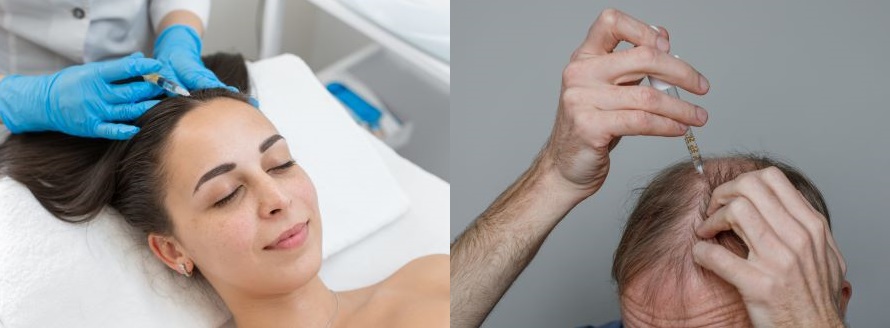Hair loss is a common problem that affects millions of people worldwide. Whether it is due to genetics, aging, stress, or medical conditions, losing hair can be frustrating. Luckily, there are several solutions available today. Three of the most popular hair restoration methods are PRP (Platelet-Rich Plasma) therapy, Minoxidil, and Hair Transplants. But which one is the best? Let’s compare PRP vs. Minoxidil vs. Transplants to find out which hair loss solution wins!
Understanding Hair Loss
Before we dive into the solutions, it is important to understand why hair loss happens. The most common cause of hair loss is androgenetic alopecia, also known as male or female pattern baldness. Other factors that contribute to hair loss include:
Hormonal changes
Poor diet
Stress
Medical conditions like alopecia areata
Side effects of medications
Now that we know the causes, let’s compare PRP therapy, Minoxidil, and hair transplants.
What is PRP Therapy?
PRP (Platelet-Rich Plasma) therapy is a modern, non-surgical treatment for hair loss. It involves drawing a small amount of blood from the patient, processing it to separate the platelets, and then injecting the concentrated plasma into the scalp.
How Does PRP Work?
Platelets contain growth factors that help in tissue healing and hair follicle regeneration. When PRP is injected into the scalp, it stimulates the hair follicles, strengthens existing hair, and promotes new hair growth.
Benefits of PRP Therapy
Non-surgical and minimally invasive
Uses the patient’s own blood, reducing the risk of allergic reactions
Stimulates natural hair growth
Improves hair thickness and strength
Quick recovery time
Drawbacks of PRP Therapy
Multiple sessions are required for noticeable results
Results vary from person to person
Can be expensive over time
Now, let’s look at Minoxidil, another widely used hair loss treatment.
What is Minoxidil?
Minoxidil is an FDA-approved topical medication used to treat hair loss. It is available over-the-counter in liquid or foam form and is applied directly to the scalp.
How Does Minoxidil Work?
Minoxidil works by increasing blood flow to the hair follicles and extending the growth phase of hair. It helps prevent further hair loss and encourages new hair growth.
Benefits of Minoxidil
Easy to use at home
FDA-approved and widely available
Helps maintain existing hair
Affordable compared to other treatments
Drawbacks of Minoxidil
Requires daily application
Takes several months to show results
Hair loss may return if treatment is stopped
Some users experience scalp irritation or dryness
Minoxidil is a good option for early-stage hair loss, but what about more advanced cases? That’s where hair transplants come in.
What is a Hair Transplant?
A hair transplant is a surgical procedure that involves moving hair follicles from one part of the scalp (donor area) to a bald or thinning area (recipient area). There are two main types of hair transplants:
Types of Hair Transplants
FUE (Follicular Unit Extraction) – Individual hair follicles are extracted and transplanted to the recipient area.
FUT (Follicular Unit Transplantation) – A strip of scalp with hair follicles is removed and divided into smaller grafts before being transplanted.
Benefits of Hair Transplants
Permanent solution for hair loss
Provides natural-looking results
Works well for advanced hair loss
Drawbacks of Hair Transplants
Surgical procedure with a longer recovery time
Can be expensive
Requires a good donor area for best results
Now that we’ve explored all three options, let’s compare them side by side.
Which Hair Loss Solution is the Best?
There is no single best solution for hair loss. The right treatment depends on the individual’s hair loss stage, budget, and preference. Here’s a quick guide to help you decide:
Choose PRP Therapy if you have early-stage hair loss and want a natural, non-surgical option.
Choose Minoxidil if you are looking for an affordable, easy-to-use treatment that helps maintain existing hair.
Choose a Hair Transplant if you have significant hair loss and want a permanent, long-term solution.
Final Thoughts
Hair loss can be challenging, but with the right treatment, you can regain confidence and restore your hair. Whether you choose PRP therapy, Minoxidil, or a hair transplant, it’s important to consult a dermatologist or hair specialist to determine the best option for you.
If you’re serious about treating hair loss, take action today. The sooner you start, the better your results will be. Which hair loss solution do you think is the best? Let us know in the comments!

